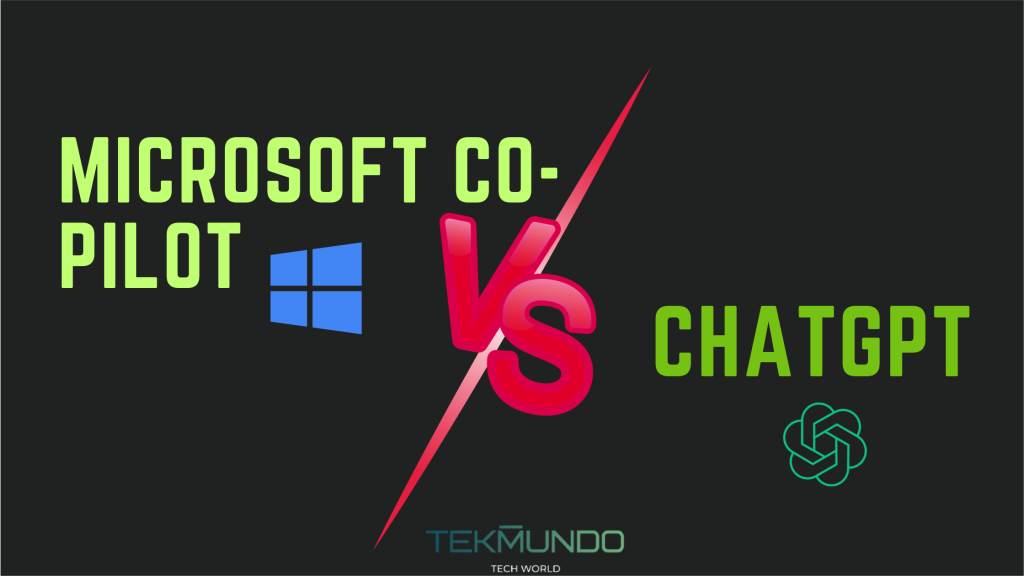The world of AI is vast and constantly changing. Among the many innovations, Microsoft Co-pilot and ChatGPT stand out for their unique capabilities and applications. Whether you’re a developer, a content creator, or just an AI enthusiast, understanding the differences and similarities between these two platforms is crucial in harnessing their full potential.
This blog post will comprehensively compare Microsoft Co-pilot and ChatGPT, exploring their functionalities, applications, strengths, and areas where they differ. Our goal is to provide you with a clear understanding of these technologies and how they’re shaping the future of AI interaction.
What is Microsoft Co-pilot?
Background and Development
Microsoft Co-pilot, a product of Microsoft’s extensive research in AI, leverages the power of large language models to assist in coding and software development.
It’s integrated into Visual Studio Code and functions as an AI pair programmer, providing suggestions and helping developers write code more efficiently.
Key Features and Statistics
- Code Completion and Suggestion: Offers real-time suggestions for code completion, significantly reducing the time and effort required for writing code.
- Documentation Lookup: Automatically looks up relevant documentation, streamlining the development process.
- Error Correction and Debugging Assistance: Identifies potential errors and offers solutions.
What is ChatGPT?
Overview and Evolution
ChatGPT, developed by OpenAI, is a conversational AI model designed to simulate human-like text-based conversations. It’s built on the GPT (Generative Pre-trained Transformer) architecture, making it adept at understanding and generating human language.
Notable Capabilities and Data Points
- Conversational Abilities: Engages in detailed conversations across various topics, mimicking human conversational styles.
- Content Generation: Can generate articles, poems, and even code snippets.
- Language Understanding and Translation: Understands and translates multiple languages, demonstrating a deep grasp of linguistic nuances.
Comparing Microsoft Co-pilot and ChatGPT
While both Microsoft 365 Co-pilot and ChatGPT are AI-driven tools, their primary functions and applications differ significantly.
Purpose and Application
Microsoft Co-pilot is primarily aimed at software development and coding. It’s a tool designed to assist developers in writing and optimizing code.
ChatGPT focuses on conversation and content creation. It’s more versatile in general language tasks, including writing, conversation, and information synthesis.
Technology and Mechanism
- Microsoft Co-pilot uses a subset of AI focused on understanding and generating code, making it more specialized.
- ChatGPT employs a broader AI model capable of understanding a wide range of text inputs and generating human-like responses.
User Interaction and Experience
- Microsoft Co-pilot offers a more technical interaction, requiring an understanding of coding and development principles.
- ChatGPT provides a more user-friendly experience accessible to individuals with varying levels of technical expertise.
Microsoft Co-pilot Strengths
Enhances Coding Efficiency: Co-pilot’s ability to understand and predict developer intentions can significantly increase coding speed. By suggesting entire lines or blocks of code, it can reduce the time taken to write repetitive or boilerplate code.
Reduces Development Time: With its predictive capabilities, Co-pilot minimizes the time spent on searching for syntax or library functions, thus accelerating the development cycle.
Offers Context-Aware Code Suggestions: Co-pilot stands out in its understanding of the context within which the code is being written. It doesn’t just suggest code snippets based on the immediate line but considers the broader scope of the project, ensuring relevance and accuracy.
Microsoft Co-pilot Limitations
Requires Technical Background: To effectively use Co-pilot, a user needs a solid understanding of programming concepts and languages. It’s not a tool for beginners but rather for those who already have coding experience.
Limited to Coding-Related Tasks: Co-pilot’s functionality is solely focused on coding and software development, lacking versatility in other areas such as general content creation or conversation.
ChatGPT Strengths
Wide Range of Conversational Capabilities: ChatGPT excels in engaging users in detailed, coherent, and contextually appropriate conversations across various topics, from casual chats to more complex discussions.
Versatile in Content Creation: Beyond conversations, ChatGPT can generate a wide array of content types, including but not limited to articles, essays, creative writing, and even basic code, showcasing a high degree of linguistic versatility.
Accessible to a Broader Audience: Unlike Co-pilot, ChatGPT does not require a specialized background to use effectively. Its intuitive and user-friendly interface makes it accessible to users with varying degrees of technical expertise.
ChatGPT Limitations
May Generate Less Precise Responses in Technical Contexts: While capable in various topics, ChatGPT might struggle with highly technical or niche subjects, especially where up-to-date or highly specialized knowledge is required.
Requires Careful Phrasing for Complex Queries: ChatGPT’s understanding of inquiries depends significantly on how questions are phrased. Ambiguity or lack of specificity in queries can lead to less accurate or relevant responses.
The Bottomline
Both Microsoft Co-pilot and ChatGPT are groundbreaking in their respective domains. Microsoft Co-pilot is revolutionizing how developers approach coding, while ChatGPT transforms how we interact with AI daily. The choice between the two depends largely on your specific needs and technical background.
As we continue to witness advancements in AI, tools like Microsoft Co-pilot and ChatGPT will coexist and evolve, potentially integrating their strengths to offer even more powerful and versatile AI solutions.






